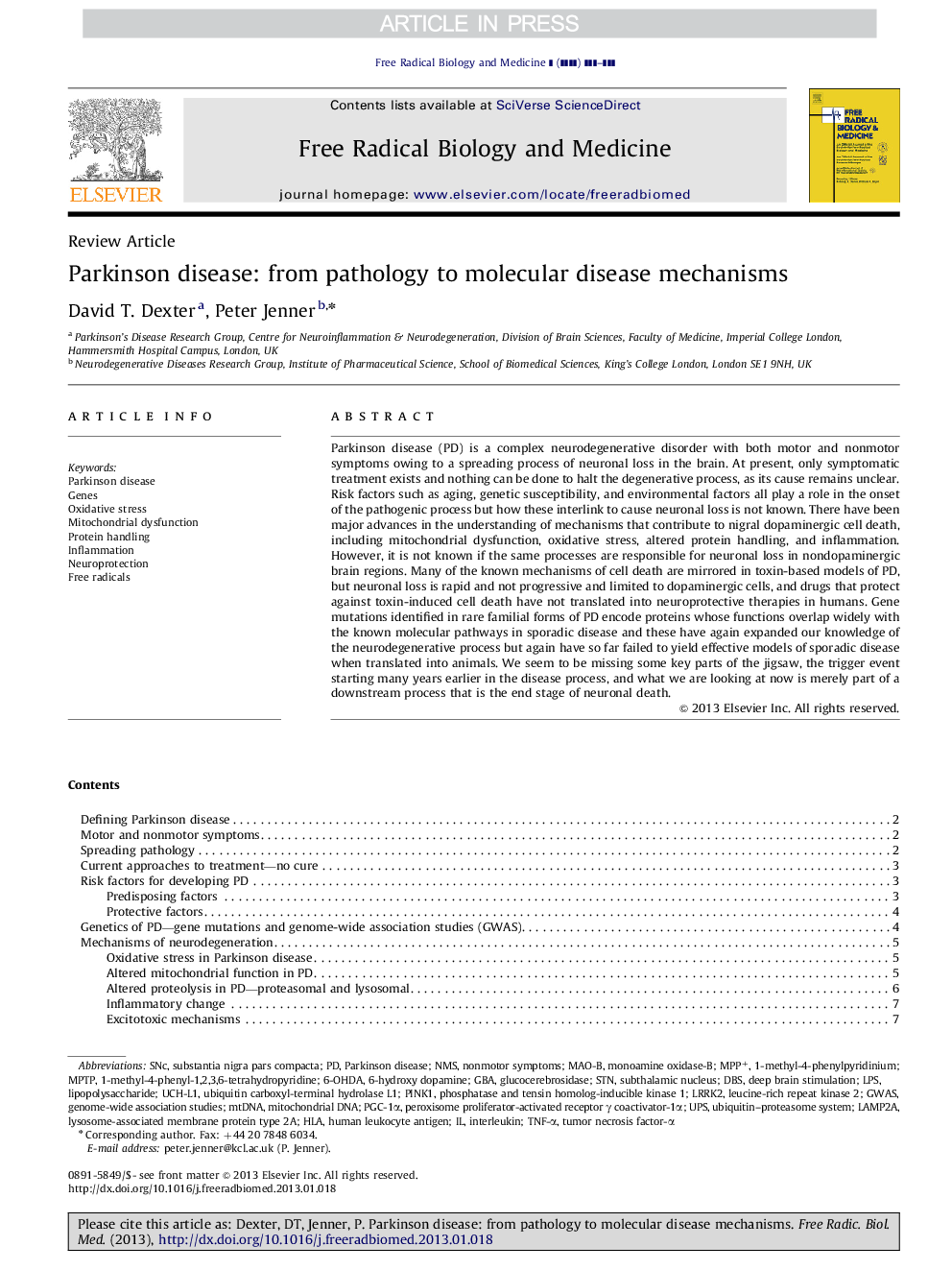| Article ID | Journal | Published Year | Pages | File Type |
|---|---|---|---|---|
| 8271099 | Free Radical Biology and Medicine | 2013 | 13 Pages |
Abstract
⺠This review summarizes the key pathological and clinical features of Parkinson disease. ⺠The roles of genetics and predisposing and protective factors are highlighted. ⺠Currently known mechanisms of neurodegeneration are critically appraised. ⺠The current animal models of Parkinson disease are appraised. ⺠The difficulty of developing effective neuroprotective drugs when no good models exist is highlighted.
Keywords
MPTPperoxisome proliferator-activated receptor γ coactivator-1αlysosome-associated membrane protein type 2AUbiquitin carboxyl-terminal hydrolase L1UCH-L1LAMP2AMAO-BGBAPGC-1α1-methyl-4-phenylpyridiniumSTNPINK1LRRK2SNCLPSDBS6-OHDANMS1-methyl-4-phenyl-1,2,3,6-tetrahydropyridine6-Hydroxy dopamineMitochondrial DNAMPP+Human leukocyte antigenHLAMitochondrial dysfunctioninterleukinParkinson diseasedeep brain stimulationOxidative stresssubstantia nigra pars compactatumor necrosis factor-αleucine-rich repeat kinase 2mtDNAGenesubiquitin–proteasome systemNonmotor symptomsTNF-αlipopolysaccharideGenome-wide association studiesGWASmonoamine oxidase-BSubthalamic nucleusglucocerebrosidaseUPS
Related Topics
Life Sciences
Biochemistry, Genetics and Molecular Biology
Ageing
Authors
David T. Dexter, Peter Jenner,
